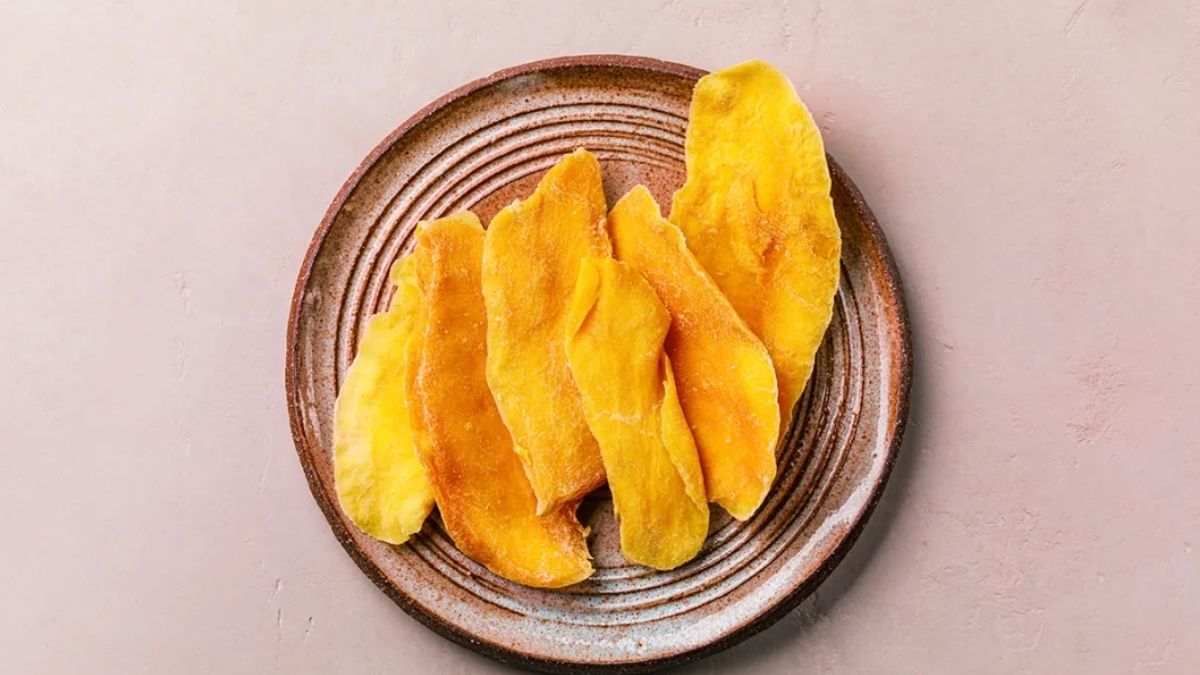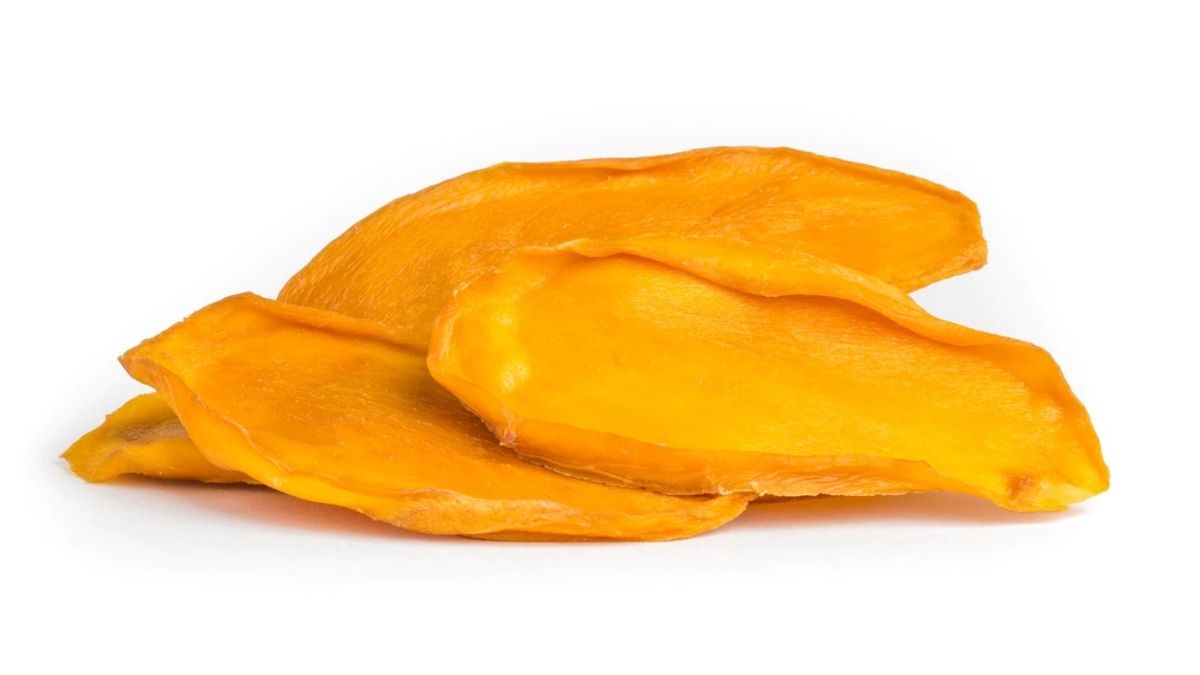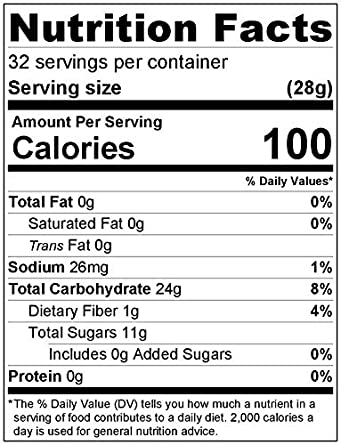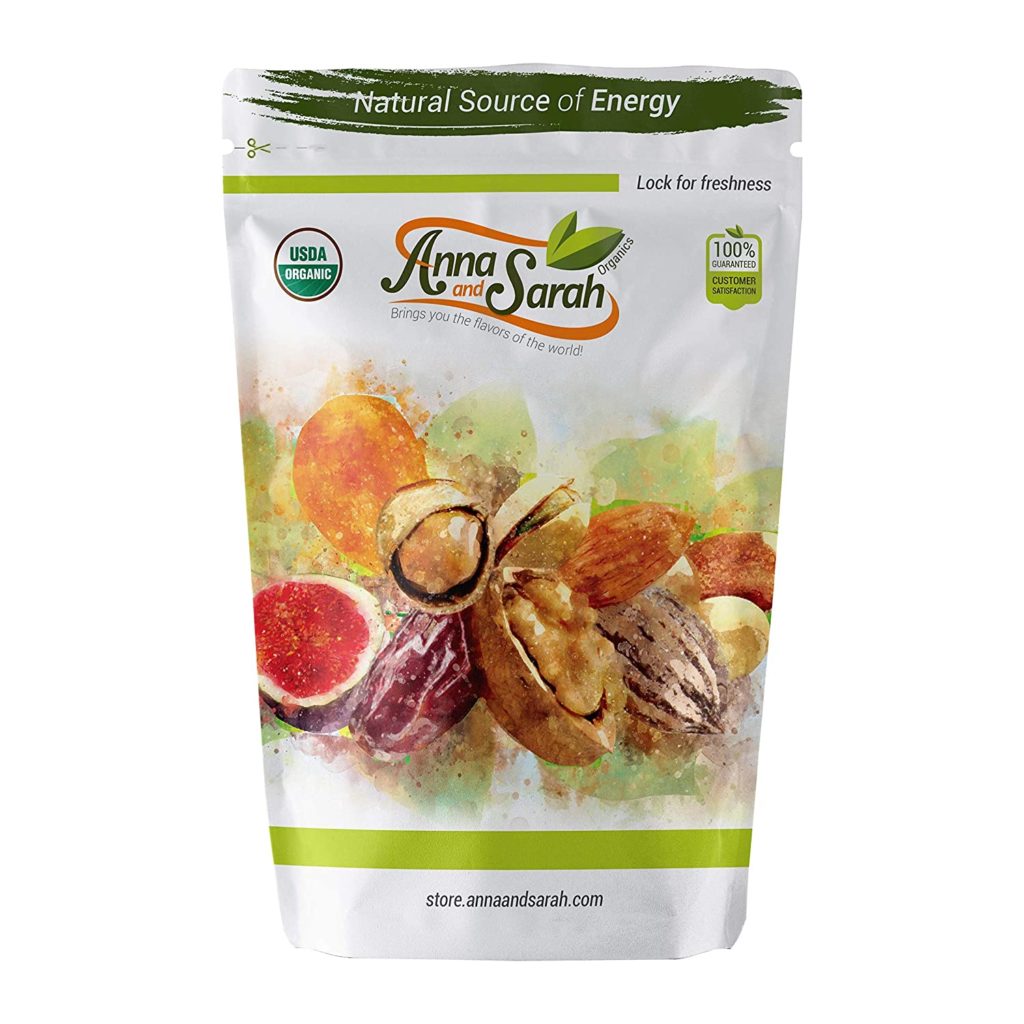Dried mangoes are high in both soluble and insoluble fiber, making them a great source of dietary fiber. Soluble fiber aids in blood sugar regulation, food absorption, and reducing LDL “bad” cholesterol. Vitamin C is abundant in mangoes. Because of the drying process, the nutritional content of a dried mango differs slightly from that of fresh mango. Although Vitamin C in dried fruit has decreased, it still includes large fiber and antioxidants. Per container of dried mango has around 100 calories, which come from carbohydrates, protein, and fat.
Dried mango contains 20% of the daily value of Vitamin A and significant amounts of Vitamin B, D, and E. The majority of the Vitamin C in the mango is lost after dehydration, and it only contains 2% of the daily amount. Dried mangoes contain minerals like calcium, iron, and phosphorus. The carotenoids and vitamin C concentration in dried mango can be preserved with an additional blanching step. Mangoes, like other fruits, contain antioxidants like mangiferin. These could help protect human cells from the harmful effects of free radicals caused by diabetes, cancer, and aging.
Dried Mango Nutrition facts
Is Dried Mango Good for You?
Mango, along with bananas, coconuts, pineapples, and plantains, is one of the most popular tropical fruits due to its sweet taste and health advantages. It is, however, a seasonal and perishable fruit. Dehydrating mango extends its shelf life and allows it to be added to other foods.
The dried mango is a dried variant of the fresh mango. Because of the lower water activity, it has a longer shelf life and is less likely to deteriorate. Dehydrated mangoes are good for health because of their impressive nutritional facts. Some of the benefits of dried mango have been mentioned below.
1. Good Source of Iron
Pregnant women and people suffering from anemia should eat dried mangoes since iron is a good source. It is suggested that they consume it regularly in the appropriate quantity.
2. Combat Acidity
Dried mangoes should be consumed at least once a day by people who suffer from acidity. It aids in the reduction of acidity as well as the improvement of digestive health. It is a good dried fruit for the stomach, and persons who have stomach problems should try to include it in their diets.
3. Rich in Vitamins
The most excellent part about dry mangoes is that they are high in Vitamin A and Vitamin E. People who regularly consume it in modest amounts can benefit because it can aid our hormonal system’s proper and effective functioning.
4. Contains Selenium
Only a few people know that mango contains selenium, a mineral that protects people from various heart-related problems. Those who already have heart problems can benefit from adding this great dried fruit to their diet.
5. Loaded with Antioxidants
Dried mango is good for your skin and health. Suppose you look closely at the dried mango nutrients. In that case, you’ll notice that they contain some active elements and antioxidants that aid in relieving skin inflammation, improving regrowth, and preventing premature aging.
It will also help you minimize blemishes and age spots, increase suppleness, and make you seem younger for a more extended period if you take it in the proper amount.
Dried Mango
How to Dry Mangoes at Home?
It is simple to dry mangoes at home and enjoy them for a long time. Just follow the steps mentioned below carefully.
Step 1: Wash And Peel
Wash the mangoes under the running water to clean them thoroughly. You will then peel the skin of the mangoes with a peeler or a knife.
Step 2: Slice The Mango
Once the skin is off, cut the mango into equal slices to simplify the drying process.
Step 3: Preheat The Oven
As you cut the mango into slices, preheat your oven to the lowest temperature and place a silicone mat or parchment paper on a baking sheet.
Step 4: Put The Slice On the Tray
As the oven is hot and the mango is turned into slices, lay the slices on the mat and ensure they do not touch or overlap each other.
Step 5: Put The Tray Into The Oven
Place the tray in the oven for 2-3 hours to allow the slices to dry. Make sure to flip the slices after 30 minutes to ensure that they dry evenly on both sides. Overcooking the slices will result in mango chips rather than dry mangoes.
Step 6: Let Them Cool:
Once you think that the slices are dry, turn off the oven and let the batch cool down for 5-10 minutes.
The dried mango slices can then be stored in an airtight container or glass jar and enjoyed as needed. Another thing to keep in mind is that these mango slices have no preservatives, so you’ll want to eat them as soon as possible to avoid mold.
Additionally, store them in an excellent, dry location to extend their shelf life. For maximum durability, could you keep it away from damp environments? If you don’t have an oven, you can use a food dehydrator or a microwave. Alternatively, you can go completely natural and let the mango slices dry naturally in the sun. It will, however, take longer than using a microwave, oven, or food dehydrator.
Are Dried Mangoes a Healthy Snack?
Dried mango is a nutritious and easy snack if you keep the serving amount in mind or take it in moderation. It’s high in vitamins and plants bioactive substances like antioxidants, which may help prevent anti-inflammatory disorders and cancer. Snacking on dried mango may be a more healthful option for salty or sugary snacks while satisfying sweet desires.
Dried mango is commonly processed as slices, with a crispy or chewy texture depending on the thickness of the slice. Dried mango can be eaten on its own or blended with nuts in baked products, yogurt, cereal, trail mix, or trail mix.
If you want to give dried mango a try, follow these buying tips to find the most nutritious choice:
- Read the ingredients list, and avoid those with added sugars or concentrated juices.
- Avoid candied dry mango or those with a sugary coating.
- Choose packages where mango is the only ingredient, or stick to those with all-natural ingredients.
Dried mango can be found in most supermarkets’ produce, dried fruit, snack, and baking departments.
How to Store Dried Mango?
While fresh mangos can be kept for around five days, dried mangos can be kept for much longer depending on several factors, including the best by date, the drying method, and how the dried mango is kept. Dried mangos keep fresh in firmly sealed containers in the refrigerator or pantry to keep moisture and other pollutants. The shelf life of unopened dried mango in the cupboard is 6–12 months. If properly stored, it can be kept in the refrigerator for 1–2 years, and it can and frozen and kept for a more extended period. However, it’s essential to look for telltale indicators that the fruit has gone sour.
Any rotten, dried mangoes should be removed from the freezer to avoid contaminating the others. Look at and smell the dried mangoes for signs of decomposition; anything with an odor or visible mold should be discarded. Discoloration, hardness, and loss of flavor are all common signs that a dried mango has gone wrong.
Are There Any Side-effects of Dried Mangoes?
Though the dried mango nutrients information is impressive, this dry fruit may have side effects.
1. Increase Glucose Level
If we talk about dried mangoes’ short-term adverse effects, we can say that they can raise your blood glucose levels, and this implies you should be cautious about how much-dried mango you consume.
2. Weight Gain
When it comes to the long-term impacts of dry mangoes, some people may gain weight if they do not track how much of the fruit they consume. Although the nutrients in dried mango are beneficial, they can also be harmful if consumed in large quantities.
3. Allergic
- Check for allergic reactions before consumption. Some people may be allergic to the components of dried mango.
Conclusion
Vitamin C is abundant in mangoes. Because of the drying process, the nutritional content of a dried mango differs slightly from that of fresh mango. Although Vitamin C in dried fruit has decreased, it still includes large fiber and antioxidants. One hundred grams of dried mango has around 67 calories, which come from carbohydrates, followed by protein and fat. Dried mango contains 20% of the recommended intake of Vitamin A and significant amounts of Vitamin B, D, and E.
After dehydration, mangoes contain only 2% of the recommended vitamin C. Dried mangoes contain minerals like calcium, iron, and phosphorus. Blanching dried mango preserves carotenoids and vitamin C. Mangoes, like other fruits, contain antioxidants, including mangiferin. These could help protect human cells from the harmful effects of free radicals caused by diabetes, cancer, and aging. Dried mango is pleasant and healthful alone or with yoghurt and nuts. When purchasing dried mango, look for brands that do not contain added sugar and have a minimal ingredient list.




